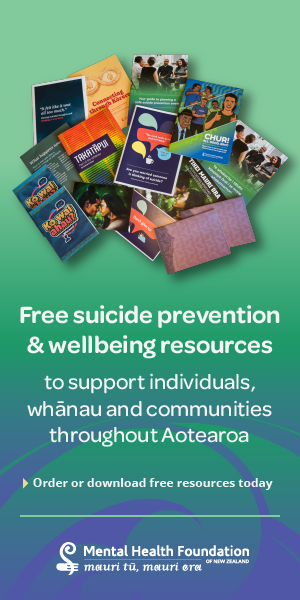
Type 2 diabetes affects a large number of New Zealanders. According to national dispensing data, about 220,000 people aged 25 and over received oral hypoglycaemic agents and/or insulin between October 2019 and September 2020.1
Generally, type 2 diabetes begins with a degree of insulin resistance but, over time, becomes a disease of insulin deficiency due to progressive pancreatic beta cell exhaustion. Metabolic, inflammatory and oxidative processes as well as glucose toxicity, lipotoxicity and hereditary factors underlie the disease pathogenesis.2
The goal of diabetes management is to prevent development, or delay progression, of microvascular and macrovascular complications, and reduce associated mortality.3 Traditionally, type 2 diabetes management included pharmacotherapies introduced in a linear, stepwise approach, alongside lifestyle interventions. Health-care access, treatment adherence and appropriate education, as well as monitoring and follow-up around treatment initiation, all play an integral role in the safe initiation of treatment and in treatment outcomes.4
Until very recently, available antidiabetic agents, outside of their glucose-lowering ability, have had little effect on the incidence and progression of macrovascular complications (see table).5 Statins, angiotensin converting enzyme (ACE) inhibitors, angiotensin receptor blockers (ARBs) and antiplatelet therapy have been the mainstay of managing increasing cardiovascular risk and mortality.2, 3
Empagliflozin, a sodium-glucose cotransporter-2 (SGLT2) inhibitor, is now funded under Special Authority for use in type 2 diabetes, and the glucagon-like peptide-1 (GLP-1) agonist dulaglutide is anticipated to be available later this year. Both agents lower blood glucose levels but also have a significant beneficial impact on renal and cardiovascular disease progression in patients with, or at high risk of, microvascular and macrovascular complications. This benefit is independent of their glucose-lowering effects.6, 7, 8
PHARMAC Special Authority criteria are designed so patients with the greatest need gain maximum benefit from these medications.9 Our approach, now, to managing type 2 diabetes has to be much more patient-centred.
‘It is important primary care practitioners are informed about these new medications: how they work, their use, which patient populations will benefit from them and how, and their potential side effects and contraindications.
Type 2 diabetes medications funded in New Zealand and their effects
| Weight change | Hypoglycaemic risk | Change in insulin resistance | Effect on CVD | Effect on heart failure | Effect on renal disease |
|---|---|---|---|---|---|
| Biguanide: metformin | |||||
| neutral | no | no | potential benefit | neutral | neutral |
| DPP-4 inhibitor: vildagliptin | |||||
| neutral | no | no | neutral | neutral | neutral |
| Thiazolidinedione: pioglitazone | |||||
| increase | no | no | potential benefit | increase | neutral |
| Sulfonylurea: gliclazide, glipizide | |||||
| increase | yes | yes | neutral | neutral | neutral |
| SGLT2 inhibitor: empagliflozina | |||||
| decrease | no | no | benefit | benefit | benefit |
| Injectable GLP-1 agonist: dulaglutideb | |||||
| decrease | no | no | benefit | potential benefit | benefit |
| Insulin: various preparations | |||||
| increase | yes | yes | neutral | neutral | benefit |
- Funded on Special Authority9
- Funded on Special Authority; awaiting Medsafe approval
It is important primary care practitioners are informed about these new medications so they can effectively advocate and care for their patients. They need to know how these agents work, their use, which patient populations will benefit from them and how, and their potential side effects and contraindications. Furthermore, an understanding of the degree of patient adherence and any factors contributing to this, in addition to strategies to promote adherence, are necessary for safe treatment initiation and optimal outcomes.4, 10, 11, 12
SGLT2 inhibitors
SGLT2 inhibitors inhibit glucose reabsorption in the proximal renal tubule, resulting in increased renal glucose excretion and therefore glycosuria diuresis.7, 13 Empagliflozin can lower HbA1c by 1.5 per cent, which equates to 6-17mmol/mol, depending on baseline HbA1c and renal function. The higher the baseline HbA1c, the greater the reduction and, subsequently, the greater the diuresis.5, 7 In studies, SGLT2 inhibitors reduced systolic blood pressure by 4-10mmHg and, due to the caloric loss, reduced weight by 2-5kg.14, 15 This weight loss can possibly offset weight gain associated with insulin.14 While a reduction in blood pressure is generally beneficial, empagliflozin may increase the risk of hypotension in normotensive patients, particularly in those treated with diuretics for hypertension or heart failure.7, 14
In addition to empagliflozin’s effects on weight, blood glucose levels and blood pressure, a 45 per cent reduction in renal disease progression, 38 per cent reduction in cardiovascular mortality, 38 per cent reduction in heart failure admissions, and regression of albuminuria have all been observed in trials.7, 13, 14, 16, 17 These effects are independent of glucose-lowering action. Empagliflozin is recommended for use in people with elevated cardiovascular risk, established atherosclerotic cardiovascular disease (CVD), chronic kidney disease (CKD) and heart failure.7
Some studies have shown that empagliflozin can reduce uric acid levels and alter some lipid levels.5, 7, 16
Panel 1. Sick-day guidelines / considerations for empagliflozin7
 Because illness can increase blood glucose levels and increase dehydration, patients when ill should:
Because illness can increase blood glucose levels and increase dehydration, patients when ill should:
- check blood glucose levels every four hours
- see their primary care provider if blood glucose levels are >15mmol/L for 24 hours
- increase their fluid intake to 1-2 glasses of non-sugary drinks per hour
- have a point-of-care ketone check if they experience nausea, vomiting or abdominal pain.
Empagliflozin should be stopped if a patient has:
- nausea or vomiting
- stomach pain (associated with vomiting)
- diarrhoea
- an inability to eat or drink.
If the illness continues for more than a few days, the patient should see their primary care provider to see if a test for ketones is required.
It is important patients continue their other diabetes medications, including insulin.
Patients can restart empagliflozin once they feel better.
Side effects
SGLT2 inhibitors are generally considered safe, but a number of potential safety issues are associated with their use. Refer to the Medsafe data sheet or the New Zealand Formulary for comprehensive information on side effects and contraindications.
- Hypoglycaemia
When used in combination with sulfnylureas and/or insulin, adding empagliflozin may increase the risk of hypoglycaemia.14 This will depend on baseline HbA1c and the anticipated HbA1c reduction. Patients may need to stop or reduce sulfonylurea medication, particularly if baseline HbA1c is ≤64mmol/mol. Total daily insulin dose may need to be reduced by up to 25 per cent.7, 14 In patients on a combination of sulfonylurea and basal insulin, the insulin should be down-titrated first. - Hypotension
Because empagliflozin acts as a diuretic and increases urinary frequency, it may cause hypotension. This may be particularly so in normotensive patients and patients on diuretic medications such as frusemide, or in those on ACE inhibitors or ARBs combined with hydrochlorothiazide.14 In some instances, a reduction in diuretic medications is required, or the thiazide combination switched for ACE inhibitor/ARB-only medication.7, 14 - Genitourinary infection
Due to glycosuria, there is a small but significant increase in the risk of genitourinary infections such as thrush and urinary tract infections.7 Women have a greater risk than men, and uncircumcised men have a greater risk than circumcised men.14 Good hygiene can ameliorate this.17 Infection is not generally a reason to cease medication, although recurrent infection may necessitate discontinuation.7, 14 - Euglycaemic diabetic ketoacidosis
Euglycaemic diabetic ketoacidosis is diabetic ketoacidosis (DKA) that can occur when blood glucose levels are not elevated. The rates of euglycaemic DKA are reported as one in 1000 to one in 3000 for SGLT2 inhibitor users, and DKA is often precipitated by infection, inflammation or fasting.5, 13, 18 New Zealand Society for the Study of Diabetes (NZSSD) guidance recommends empagliflozin be withheld during periods of illness or fasting and patients should have their ketones checked if they experience nausea, vomiting or abdominal pain.18 An example of sick-day considerations can be found in Panel 1. - Fournier gangrene
Extremely rare, Fournier gangrene, a necrotising fasciitis of the perineum, has been observed in both men and women using empagliflozin. Anyone presenting with tenderness, erythema and swelling in the genital or perineal region should be evaluated for necrotising fasciitis and empagliflozin stopped immediately if suspected.5
Contraindications/precautions
The main contraindications of SGLT2 inhibitors are a history of DKA, type 1 diabetes and CKD (severe and end-stage disease). In patients with an estimated glomerular filtration rate (eGFR) of <45ml/min/1.73m2, glucose-lowering effectiveness is reduced and so SGTL2 inhibitors are not recommended.5, 7, 13 However in trials, cardiovascular and renal benefits have occurred in patients with an eGFR as low as 30ml/min/1.73m2.
Caution is advised in patients on very low carbohydrate or ketogenic-type diets, as the risk of DKA may be increased, and vigilance for undiagnosed autoimmune diabetes is important.13 Caution should be used in older adults (>75 years) who may experience greater diuresis and a greater risk of orthostatic hypotension.16
GLP-1 agonists
GLP-1 agonist dulaglutide is an injectable synthetic hormone that increases first-phase insulin response (insulin released in response to food ingested) and second-phase (glucose-dependant) insulin secretion. It inhibits glucagon secretion and slows gastric motility so can reduce appetite while increasing satiety.8, 19
GLP-1 agonists can reduce HbA1c by 13-15mmol/mol and average weight loss is equitable to that of SGLT2 inhibitors (2–5kg), according to studies.8, 19, 20 However, in clinical practice, much greater weight and HbA1c reduction has been observed – in some cases weight loss of ≥15kg and HbA1c reduction of 20mmol/mol.5 Early weight loss after starting treatment is a strong predictor of significant weight and HbA1c reduction.20 GLP-1 agonists may reduce systolic blood pressure by 2-5mmHg.6, 19
GLP-1 agonists are associated with a significant reduction in cardiovascular events and albuminuria, and likely afford long-term protection against eGFR decline.5, 6 In the REWIND trial, dulaglutide demonstrated a 12 per cent reduction in the primary outcome (non-fatal myocardial infarction, non-fatal stroke or death from cardiovascular causes) in patients with and without a history of CVD.5, 21
The underlying mechanisms accounting for the decrease in cardiovascular and renal outcomes is thought to be related to a composite of actions: body weight, blood pressure and postprandial triglyceride reduction, and effects on inflammatory processes that contribute to endothelial dysfunction.6
Side effects
Generally, dulaglutide is are well tolerated. The main side effects are described here, but refer to the Medsafe data sheet or the New Zealand Formulary for comprehensive information on side effects and contraindications.
- Gastrointestinal disturbance
Abdominal discomfort, nausea and reduced appetite are by far the most common side effects and are primarily related to reduced gastric motility, which is greatest after the initial injection and tends to settle over a few weeks.6, 8 Some patients may experience more extreme gastric disturbance, diarrhoea or vomiting and not be able to tolerate a GLP-1 agonist. - Hypoglycaemia
When used in combination with insulin or sulfonylureas, there is an increased risk of hypoglycaemia. Pre-emptive dose reductions of these medications may be necessary, depending on baseline HbA1c.8 - Hypersensitivity reactions
Injection-site hypersensitivity reactions may occur in 0.5 per cent of patients – most commonly pruritus, which is transient and generally tolerated without the need to discontinue treatment.8
Contraindications/precautions
- Medications with narrow therapeutic index: Because dulaglutide slows gastric emptying, closer monitoring of drugs with a narrow therapeutic index may be required (eg warfarin, digoxin, lithium, phenytoin and others).8
- Thyroid and endocrine cancers: GLP-1 agonists are contraindicated in patients with a personal or family history of medullary thyroid cancer.19, 22
- Pancreatitis: The risk of pancreatitis associated with GLP-1 agonists has recently been invalidated; however, a subclinical rise in amylase and lipase levels has been observed and many health-care providers consider avoiding dulaglutide in patients with a history of pancreatitis.5
- Severe gastric disease: Because of gastrointestinal (GI) side effects and the direct effects of GLP-1 agonists on gastric emptying, these agents are not recommended for patients with a history of gastroparesis, Crohn’s disease and other severe forms of gastric disease.5, 8
- Renal disease: All GLP-1 receptor agonists can be used without dose adjustment in patients with mild renal impairment, and dulaglutide does not require dose adjustment even in patients with severe renal impairment. However, postmarketing reports for GLP-1 agonists have identified instances of acute renal failure – some in patients with no known underlying renal disease – and worsening of chronic renal failure.22 Most events occurred in patients who had experienced nausea, vomiting, diarrhoea or dehydration. Because these reactions may worsen renal function, caution is required when initiating or escalating GLP-1 agonists in patients with renal impairment, and close monitoring of renal function should occur in those who report severe GI reactions.22, 23
Where do these new medications fit?
Metformin remains the preferred first-line therapy for people with type 2 diabetes, followed by dipeptidyl peptidase-4 (DPP-4) inhibitor vildagliptin for those without macrovascular complications. For patients with a five-year CVD risk ≥15 per cent, existing CVD, renal disease or a high lifetime CVD risk, and who have not met target HbA1c levels, either a SGLT2 inhibitor or a GLP-1 agonist is recommended. For patients with heart failure, a SGTL2 inhibitor may be more beneficial; however, where weight loss is a priority, a GLP-1 agonist may be a better treatment option. The NZSSD treatment algorithm provides guidance on treatment options.
SGLT2 inhibitors and GLP-1 agonists are safe to use in combination with each other and can generally be used safely with all hypoglycaemic medications.8, 14 However, PHARMAC Special Authority states funding is applicable to either empagliflozin or dulaglutide,9 so should patients want to combine these agents, they would need to apply for funding for one agent and self-fund the other.
Insulin and/or sulfonylureas still have a place in treatment for patients who require greater glucose lowering in addition to an SGTL2 inhibitor or GLP-1 agonist.
Treatment initiation and follow-up
After patient medical history has been reviewed and a treatment plan agreed on, it is important patients receive appropriate assessment, education and follow-up to ensure their safety and promote optimal treatment outcomes.7 A focus on treatment initiation can increase adherence and reduce time later re-examining patient motivation and employing adherence strategies (see Panel 2).24
Panel 2. Treatment adherence strategies
 Strategies that promote adherence include:10, 11, 12, 24, 27, 28
Strategies that promote adherence include:10, 11, 12, 24, 27, 28
- shared decision-making and positive interactions with health-care providers before starting treatment
- simplification of medication regimes
- understanding of patients’ perceptions and beliefs about medications
- increased access to relevant knowledge delivered at an appropriate level
- use of motivational interviewing techniques
Baseline assessment
Prior to starting empagliflozin or dulaglutide, patient weight, blood pressure, current medications (including current medication adherence levels) and glycaemic control (using blood glucose monitoring and HbA1c results) should be assessed.
If patient HbA1c level is ≤64mmol/mol, a pre-emptive reduction of insulin or sulfonylurea is recommended, and in normotensive patients starting a SGLT2 inhibitor, a reduction of antihypertensive medication should be considered – particularly the reduction or cessation of diuretic medication. Level of adherence may significantly influence decision-making on dose reductions of medications.
For both medications, baseline and follow-up laboratory measures should include HbA1c, renal function (creatinine, electrolytes, eGFR and urine microalbumin) and liver function tests and full blood count. For dulaglutide, baseline and follow-up amylase and lipase levels are good practice.
Dosage
- Empagliflozin: Available in 10mg and 25mg tablets, empagliflozin is best taken in the morning to avoid nocturia.7 A missed dose must be omitted, but dosing can resume as usual the following day. A starting dose of 10mg per day is recommended, which can be increased to 25mg per day after four weeks for additional glycaemic control.25
- Dulaglutide: Dosing in New Zealand is expected to be a weekly subcutaneous injection in the abdomen, upper arm or thigh of 1.5mg/0.5ml solution, administered via a prefilled auto-injector.9, 22 Dulaglutide should be stored in the fridge but is stable at room temperature for 14 days. A missed dose can be administered within three days of the scheduled time.22 Patients should start on 1.5mg/week and can increase the dose if additional glucose lowering is required after four weeks.19
Follow-up
Follow-up should occur two to four weeks after the start of treatment (those with greater risk of hypoglycaemia or hypotension should be followed up within two weeks), and again after three months. Repeat laboratory tests should occur at one and three months.
If, after one month, blood glucose levels are not optimal, dose can be increased. Adherence and the need to reduce antihypertensives, insulin or sulfonylureas should be considered before escalating treatment. Diuresis and glucose-lowering efficacy do not appear to be as great with dose titration, compared with that seen at dose initiation.
The full extent of treatment outcomes are usually evident within six months of initiation, so routine follow-up every three to six months is recommended, to support adherence and assess for ongoing treatment requirements.
What does the patient need to know?
Before starting empagliflozin or dulaglutide, patients should receive all relevant information about the proposed treatment in a way they can understand, so they can make an informed decision.11 Apart from information about dosage, when/how to take the medication and what it does, a patient needs to know how to recognise and treat hypoglycaemia. So home blood-glucose monitoring is vital when patients are also taking insulin or sulfonylureas.
- Empagliflozin: Although diuresis does not usually cause dehydration, patients should be counselled on drinking when thirsty and reporting symptoms of hypotension. They should be aware of signs and symptoms of a urinary tract infection, thrush and DKA, and to seek early treatment. In addition, they need to know how to manage illness (Panel 1).
- Dulaglutide: Patients should be made aware of initial gastrointestinal effects and when to report more severe symptoms, as well as the possibility of injection-site pruritus. As with all new medications, patients should be instructed to report any side effects.
What about adherence?
Adherence, or the extent to which patients take medications, can be as low as 50 per cent which imposes significant costs on both the individual and the health-care system.10, 12 Using dispensing data, a Dunedin study examined adherence to oral hypoglycaemic agents through the proportion of days covered by the medication (PDC).26 Results showed more than half the patients had a PDC of less than 80 per cent. Extreme non-adherence, defined as a PDC of less than 50 per cent, was more common in Māori, men and people with high socioeconomic deprivation.26 It is widely established that adherence tends to decrease and patient burden increase as medication amount and complexity increase.27, 28 For many patients, diabetes is just one of a number of long-term conditions they are living with.
Patients with multimorbidity taking multiple medications are expected to process and understand a large amount of health information.
EARN one hour of CPD
- Nurses can claim 60 minutes’ professional development for reading this article then completing the assessment.
Patients with multimorbidity taking multiple medications are expected to process and understand a large amount of health information.29 A University of Otago study showed as many as 20 per cent of patients did not know the purpose of their medications and described difficulty in managing them.28 While factors contributing to non-adherence are complex, access to appropriate information – particularly when initiating new medications – and increasing health literacy are directly correlated to increased adherence.4, 29 It is important to explore these factors with patients, to open up discussion and create opportunities to provide education and strategies to promote adherence (see Panel 2).
References
- He Ako Hiringa. (2020). EPiC dashboard: Type-2 Diabetes.
- Stumvoll, M., Goldstein, B. J., & Haeften, T. W. (2005). Type 2 diabetes: Principles of pathogenesis and therapy. Lancet, 365, 1333–46.
- American Diabetes Association. (2000). Cardiovascular disease and risk management: Standards of medical care in diabetes – 2000. Diabetes Care, 43(Suppl. 1), 111–34.
- Mickelson, R., & Holden, R. J. (2018). Medication adherence: Staying within boundaries of safety. Ergonomics, 61(1), 82-103.
- Feingold, K.R. (2020). Oral and injectable (non-insulin) pharmacological agents for Type 2 Diabetes. In K.R. Feingold, B. Anawalt, & A. Boyce et al., (Eds.), Endotext. MDText.com, Inc.
- Labianto, R., Davis, T. M. E., & Ekinci, E. I. (2020). Advances in type 2 diabetes therapy: A focus on cardiovascular and renal outcomes. Medical Journal of Australia, 212(3), 133-39.
- Barmanray, R. D., Ariarajah, D., & Kevat, D. A. (2020). SGLT-2 inhibitors: practical prescription advice for the generalist. Medicine Today, 21(7), 33-37.
- Smith, L. L, Mosley, J. F., Parke, C., Brown, J., Barris, L. S., & Phan, L. D. (2016). Dulaglutide (Trulicity): The third once-weekly GLP-1 agonist. Pharmacy and Therapeutics, 41(6), 357-60.
- PHARMAC. (2021). Decision to fund two new medicines for type 2 diabetes – Amended with Q&A.
- Lam, Y. L., & Fresco, P. (2015). Medication adherence measures: An overview. Biomed Research International. doi.org/10.1155/2015/217047
- While, A. (2020). Medication Adherence: Understanding the issues and finding solutions. British Journal of Community Nursing, 25(10), 474-79.
- Bassett-Clark, D., Krass, I., & Bajorek, B. (2012). Ethnic differences of medicine-taking in older adults: A cross cultural study in New Zealand. International Journal of Pharmacy Practice, 20(2), 90-98.
- Sampani, E., Sarafidis, P., & Papagianni, A. (2020). Euglycaemic diabetic ketoacidosis as a complication of SGLT-2 inhibitors: Epidemiology, pathophysiology, and treatment. Expert Opinion on Drug Safety, 19(6), 673-82.
- Thompson, J., & Hershon, K. S. (2016). Options for empagliflozin in combination therapy in type 2 diabetes mellitus. International Journal of General Medicine, 9, 155-72.
- Majewski, C., & Bakris, G. L. (2015). Blood pressure reduction: An added benefit of sodium-glucose-cotransporter 2 inhibitors in patients with type 2 diabetes. Diabetes Care, 38, 429-30.
- Giorgino, F., Vora, J., Fenici, P., & Solini, A. (2020). Renoprotection with SGLT2 inhibitors in type 2 diabetes over a spectrum of cardiovascular and renal risk. Cardiovascular Diabetology, 19, 196. doi.org/10.1186/s12933-020-01163-9
- Fitchett, D. H. (2018). Empagliflozin and cardio-renal outcomes in patients with type 2 diabetes and cardiovascular disease – implications for clinical practice. European Endocrinology, 4(2), 40-49.
- New Zealand Society for the Study of Diabetes, Ministry of Health. (2021). Type 2 diabetes management guidelines: SGLT2 inhibitors.
- Prasad-Reddy, L., & Isaacs, D. (2015). A clinical review of GLP-1 agonists: efficacy and safety in diabetes and beyond. Drugs in Context, 4, 212283.
- Brown, E., Wilding, J. P. H., Barber, T. M., Alam, U., & Cuthbertson, B. J. (2019). Weight loss variability with SGLT2 inhibitors and GLP-1 receptor agonists in type 2 diabetes mellitus and obesity: mechanistic possibilities. Obesity Reviews, 20(6), 816-28.
- Gerstein, H. C., Colhoun, H. M., Dagenais, G. R., Diaz, R., Lakshmanan, M., Pais, P., Probstfield, J., Riesmeyer, J. S., Riddle, M. C., Rydén, L., Xavier, D., Atisso, C. M., Dyal, L., Hall, S., Rao-Melacini, P., Wong, G., Avezum, A., Basile, J., Chung, N., Conget, I., Cushman, W. C., Franek, E., Hancu, N., Hanefeld, M., Holt, S., Jansky, P., Keltai, M., Lanas, F., Leiter, L. A., Lopez-Jaramillo, P., Cardona Munoz, E. G., Pirags, V., Pogosova, N., Raubenheimer, P. J., Shaw, J. E., Sheu, W. H., Temelkova-Kurktschiev, T., & REWIND Investigators. (2019). Dulaglutide and cardiovascular outcomes in type 2 diabetes (REWIND): A double-blind, randomised placebo-controlled trial. Lancet, 394(10193), 121-30.
- Eli Lilly and Company. (2017). Trulicity (dulaglutide) prescribing information (PDF, 1.09 MB). US Food and Drug Administration.
- Filippatos, T. D., Panagiotopoulou, T. V., & Elisaf, M. S. (2014). Adverse effects of GLP-1 receptor agonists. Review of Diabetic Studies, 11(3-4), 202-30.
- Maffoni, M., Traversoni, S., Costa, E., Midão, L., Kardas, P., Kurczewska-Michalak, M., & Giardini, A. (2020). Medication adherence in older adults with chronic multimorbidity: a systematic review of qualitative studies on patient’s experience. European Geriatric Medicine, 11, 369-81.
- Boehringer Ingelheim (NZ). (2019). Jardiance (empagliflozin) data sheet (PDF, 894 KB). Medsafe.
- Khargul M. D., Cameron, C., & Braund, R. (2019). Using the Pharmaceutical Collection Database to identify patient adherence to oral hypoglycaemic medicine. Journal of Primary Health Care, 11(3), 265-74.
- Krska, J., Katusiime, B., & Corlett, S. A. (2018). Patient experiences of the burden of using medicines for long-term conditions and factors affecting burden: a cross sectional survey. Health and Social Care in the Community, 26(6), 946-59.
- Millar, E., Gurney, J., Stanley, J., Stairmand, J., Davies, C., Semper, K., Dowell, A., Lawrenson, R., Mangin, D., & Sarfati, D. (2019). Pill for this and a pill for that: a cross-sectional survey of use and understanding of medication among adults with multimorbidity. Australasian Journal on Ageing, 38(2), 91-97.
- Fredericksen, R. J., Gibbons, L., Brown, S., Edwards, T. C., Yang, F. M., Fitzsimmonsa, E., Alperovitz-Bichell, K., Godfrey, M., Wang, A., Church, A., Gutierrez, C., Paez, E., Dant, L., Loo, S., Walcott, M., Mugavero, M. J., Mayer, K., Mathews, W. C., Patrick, D. L., Crane, P. K., & Crane, H. M. (2018). Medication understanding among patients living with multiple chronic conditions: implications for patient-reported measures of adherence. Research in Social and Administrative Pharmacy, 14(6), 540-544.




